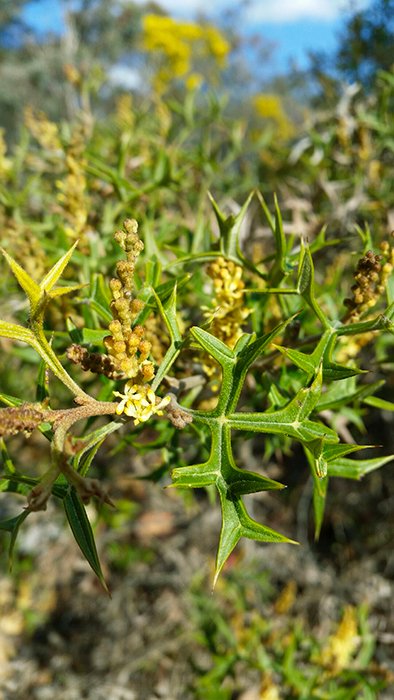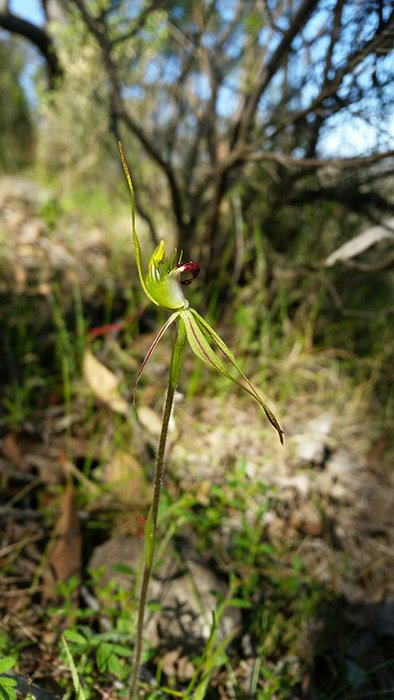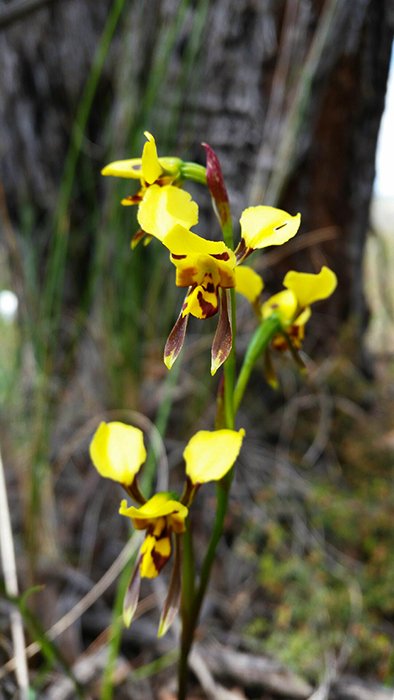
History Project Stories
Mount Jerrabomberra
Mount Jerrabomberra -
Queanbeyan’s most significant physical asset
Visually prominent, ecologically valuable and well used for recreation, Mt Jerrabomberra literally towers over Queanbeyan and was a turning point in the recent history of land management and nature conservation in the district. Plans to develop the area for residential housing sparked controversy, but also heightened awareness of conservation in the growing city, and led to the formation of community advocacy groups, and collaborations across these groups and with local and state government agencies. While the early years of debates over the future of Mt Jerrabomberra predated the formation of Queanbeyan Landcare, the group has been active in the issue, and the story provides a background to many other projects and evidences a familiar pattern of individual dedication and cooperation.
A NSW National Parks & Wildlife Service Report on Mount Jerrabomberra in 1988 stated:
‘ a surprisingly large number of native bird species so close to a settled area’
‘highly significant for wildlife conservation both locally and regionally not just for resident species but also as a ‘resting spot’ for migrant fauna’.
‘a natural community virtually intact and with such good public access, is hard to over estimate’
And from the Mt Jerrabomberra Preservation Society in 1999 by Michael Calkovics
‘To save something truly unique and of value, not just to Queanbeyan but to our nation as a whole, or to walk away. The second option has not been a consideration of the Society’
The Monaro Conservation Society in 1998
‘A call for greater supervision by QCC to ensure the impact of development is kept to a minimum. Retain local vegetation for its own sake, for visual amenity and erosion control’.
These statements were made during many years of study, negotiation, controversy, contested activities and behaviours, and legal interaction by developers, conservationists and planners over the limits of development on Mount Jerrabomberra.
Streets were planned and named, well beyond the existing upper extent of current development.
Queanbeyan Age article (pictured below):
Fur flies over future of Mount Jerrabomberra
However, a newspaper clipping from The Queanbeyan Age on Friday 18 May 2001 indicates that a solution was achieved (pictured below):
‘Mountain back under community management’ stated ownership of the upper slopes of Mt Jerrabomberra has passed from the developer to Queanbeyan City Council giving the community ownership and control of the vast majority of Mt Jerrabomberra.’
After much controversy and negotiation, development was limited to the lower slopes, and the upper parts of the mountain transferred to public ownership for conservation and recreation.
A great summary of the lead up to this resolution was written by Tom Baker in December 1999 and published in the ‘Jerrabomberra Newsletter’ below.
The Plan of Management (cover pictured) for Mount Jerrabomberra released in 2004 was a key outcome of the gifting of Mount Jerrabomberra to the community.
Members of Queanbeyan Landcare were on the Mount Jerrabomberra Management Plan Steering Committee during both finalization and implementation of the plan. The group hosted a walk in May 2004 up Mt Jerrabomberra to discuss the Management Plan with the community and identify many of the local native species. Jo Walker led a group of over 20 people.
[2004 Flora & Fauna lists in below gallery]

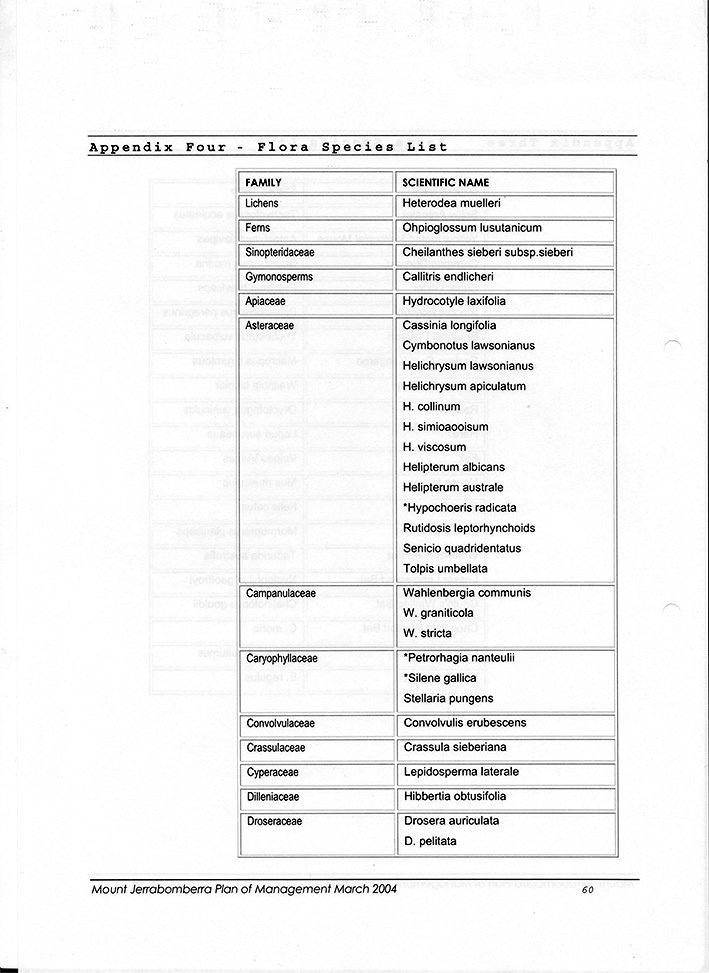


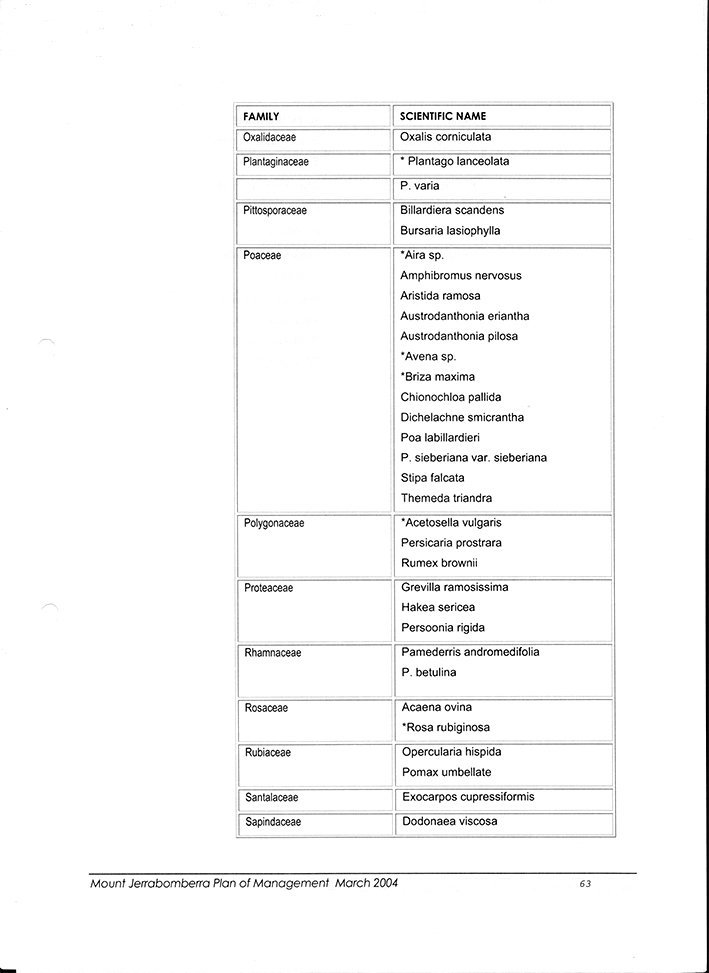

Friends groups
The Queanbeyan Landcare (QLc) formation of Friends of Mt Jerrabomberra and Stringybark Ridge (FOMJASR) Bushcare Group began in late 2011/January 2012 by two local residents (Daryl Crapp and Alison Roach) who had moved to the area. After many walks through the Mt Jerrabomberra nature reserve, it became evident that the area was a high value conservation area. The area had many species of native terrestrial orchids that were widespread and easily visible but also had areas of Cootamundra Wattle (a recognised environmental weed in the ACT/Queanbeyan area) that needed control to stop them from taking over. Recognising that inaction would just see larger areas being colonised by the wattle and the orchid areas being affected, Daryl and Alison started thinking about what could be done.
Using their experience gained through the ACT Parkcare system and recognising the need to have council and local environment group backing, the pair joined Queanbeyan Landcare and used the knowledge of the group on how best to engage with the then Queanbeyan City Council (QCC) now the Palerang-Queanbeyan Regional Council (QPRC), as the land manager. Once the Manager of Natural Landscapes and Health had been identified, contact was made, and discussion commenced on the logistics behind setting up a community group to help in the management of Mt Jerrabomberra Nature Reserve.
The proposal was discussed at the 2 May 2012 Environment and Sustainability Committee Meeting and passed onto council for vote. The proposal was endorsed by the QCC and gave consent for a QLc group to operate in the reserve and control woody weeds in early July 2012. The formation of this type of group was first suggested in the 2004 Mt Jerrabomberra Plan of Management on page 37 – Facilitate and initially support the establishment of a Friends of Mount Jerrabomberra Bushland Reserve group.
Once permission had been given by QCC, Alison and Daryl commenced with a survey of the Mt Jerrabomberra reserve and mapping weed areas, then started work on controlling Cootamundra Wattle, Radiata Pine, and other woody weeds found within the Mt Jerrabomberra Nature Reserve. Fortunately, the survey didn’t find a high load of environmental weeds on the mountain, so a targeted approach was started focussing on the most affected areas close by to where they lived. Work activity was recorded and reported to QCC during this time. Insurance for the small group was covered by Queanbeyan Landcare membership and herbicide was provided by QCC.
Both groups participated in the opening of the Mt Jerrabomberra lookout on Saturday 9 August 2014 by leading short informative walks.
From September 2014 through to early 2015, advocacy for joining reserves together through wildlife corridors by other environmental groups such as Molonglo Catchment Group and Kosciusko to Coast etc was starting to be more frequently voiced and funding sourced to achieve this outcome. Queanbeyan Landcare had also been part of the ‘Stepping stones for small birds’ project, engaging with private land holders in Fernleigh Park and other adjacent areas, putting small plots of trees into the landscape, no more than 150m apart, which encourages small bird movement through the landscape. Part of the funding sought for these initiatives was to develop a ‘friends of group’ for both Stringybark Ridge and the newly established ‘Offset block’ that QCC purchased to offset the clearing of bushland for the extension the Edwin Land Parkway between Cooma Road and the Edwin Land Parkway and Numeralia Drive roundabout, Jerrabomberra.
In March/April 2016, QLC in partnership with QCC, began a number of planting activities on the newly acquired council ‘Offset block’ which had previously been grazing land with associated high weed load. Two Groups of Australian Defence Force Academy personnel and a Canberra Institute of Technology student group planted a significant amount of mixed species plants in the area. The planting activities wouldn’t have occurred without the dedication and energy of Bruce Davies, Peter Woodbury, Bill Willis, Bill Hall and others. The Offset block is south of Stringybark Ridge, sandwiched between the Holcim quarry and private property in the east and the suburban fringe defined by Bicentennial Drive Jerrabomberra, and the southern limit borders the private property of ‘Wandiyali’ which is a conservation property protecting Box Gum Grassy Woodland and Natural Temperate Grasslands, and riparian habitats.
A community walk on the QPRC Offset block was organised for July 2016 between the QPRC, QLc, and Molonglo Catchment Group, to advertise that QPRC now owned the land and that this new area was for all to enjoy as a bushland reserve. It was also an opportunity to promote that QPRC and QLc were actively involved in managing and improving the environmental value of the ex-grazing land. With additional land being set aside by QPRC linking Mt Jerrabomberra reserve further south to Wandiyali, it became evident that two people alone would not be able to achieve a significant environmental outcome for the area. With this in mind, and with encouragement from Bill Willis, Tom Baker and others within QLc, along with Molonglo Catchment Group, it was decided to expand the group and find other likeminded community members. Major logistical questions such as the insurance mechanism for non-QLc community members undertaking work, access to high quality tools, and herbicide were thought through and funding opportunities researched.
Golden Wattle
In 2016 Alison Roach wrote this summary and attached many wonderful photos (left):
Queanbeyan Landcare has a small working party that helps to care for the Mount Jerrabomberra Nature Reserve by controlling woody weeds, with Queanbeyan City Council approval. The reserve is a valuable habitat for many native bird species, and mammals like the eastern grey kangaroo and sugar gliders. It also contains some beautiful examples of native plants, including our Australian floral emblem, the golden wattle – Acacia pycnantha, the fan grevillea - Grevillea ramosissima and a multitude of native ground orchids. In springtime, eagle-eyed walkers can come across spider orchids, green hoods, flying ducks, donkey orchids and many more. Many residents don’t even realise that we have such a fabulous natural resource so close to where we live. Some of the plant communities on Mount Jerrabomberra are rare, and orchids in particular are highly sensitive to disturbance, so please be careful to only look and take photos.
A successful application to the Stronger Communities Fund Grant purchased equipment that FOMJASR now uses, and herbicide supply was negotiated with QPRC which is replenished as needed. The first FOMJASR meeting was held on Sunday, 5 December 2016, at the Old Cooma Road Offset block near the dam. Four people from the community volunteered their time on the day and Briar Rose was the main woody weed controlled using the ‘cut and dab’ method using weeding wands to ensure that herbicide was applied to the cut stumps. The next meeting was held on the first Sunday in March 2017.
In June 2019 as part of the Australian Government’s 20 Million Trees Program 580 trees were planted in the Offset Block near Balcombe St Jerrabomberra in about 2 hours by over 60 people. The event was organised by the Molonglo Conservation Group but attended by members of Queanbeyan Landcare who were often members of both groups.
FOMJASR continues holding their work activities on the first Sunday of each month, 9-12pm from March to December each year. COVID interrupted the group extensively in 2020 and 2021 with meetings cancelled due to NSW Health advice at the time.
Read more at Mt Jerrabomberra & Stringy Bark Ridge — Queanbeyan Landcare
A new Plan of Management for Mount Jerrabomberra was released in 2021. Once again members of Queanbeyan Landcare were involved in many aspects of its development. Read more at Submissions — Queanbeyan Landcare.
In 2022 World Environment Day was celebrated on Mount Jerrabomberra. Organised by QPRC this event was attended by volunteers from Queanbeyan Landcare and Molonglo Conservation Group. There was much sharing of information and resources and guided walks up the mountain by the people who have a long interest in the area namely Tom Baker, Bill Willis, Daryl Crapp and Alison Roach.
Fan Grevillea
Spider Orchid
Flying Duck
Orchid
Donkey
Orchids
Snail Orchids









